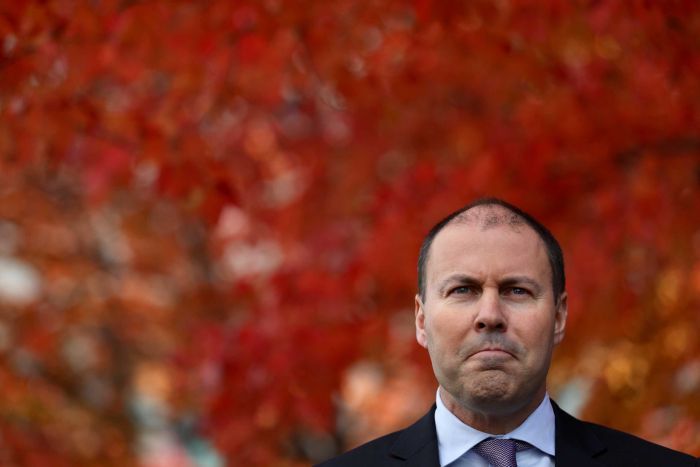
You could be forgiven for being confused about Labor’s big tax proposals.
Depending on which side of politics you listen to, Labor’s plans for negative gearing, franking credit refunds and capital gains tax concessions will either hurt those who can least afford it, or claw back tens of billions of dollars of extra revenue from the relatively well-off by shutting down overly-generous tax loopholes.
There is little doubt these tax decisions, if implemented, would have significant ramifications for the economy, the budget and particular groups of people.
RMIT ABC Fact Check does not seek to make a judgement about the relative merits of these policies.
Our focus is on how the tax data is being used in the public policy debate.
The Federal Government’s contention is that Labor’s three tax policies will primarily hit people on low and middle incomes — teachers, nurses and emergency services workers, for example.
In February, Treasurer Josh Frydenberg told Parliament that Labor’s plan to scrap refundable franking credits on dividends from shares would “fall hardest on the lowest income earners in our community”, with 80 per cent of those affected on taxable incomes under $37,000.
In January, Frydenberg posted on Twitter: “With 60%+ of taxpayers who had a capital gain having a taxable income under $80,000, Labor will discourage Australians to save & invest & punish those who do!”
Last November, he said: “We know that two-thirds of those who use negative gearing have a taxable income of under $80,000.”
RMIT ABC Fact Check has scrutinised several such claims — on negative gearing, on dividend imputation, and on capital gains — in recent weeks.
In each case, we found the claim to be misleading.
And in each case, there has been a common focus — taxable income.
The problem is, taxable income is a lousy way to analyse whether a household is wealthy or not.
Broadly, households — particularly the well-off ones — can use all sorts of tools to reduce their taxable incomes: by negatively gearing losses on investment properties; by claiming other business losses; or by transferring assets to family members, for example.
Moreover, under the very generous superannuation arrangements introduced by the Howard government in 2006, individuals can transfer up to $1.6 million into a tax-free, retirement-phase superannuation account.
That means many relatively wealthy households in retirement have low or zero taxable incomes.
In a recent submission to a House of Representatives inquiry, the Grattan Institute offered the example of a self-funded retiree couple with a $3.2 million super balance, plus their own home, and a $200,000 portfolio of Australian shares.
“Even drawing $130,000 a year in superannuation income, and $15,000 a year in dividend income, they would report a combined taxable income of just $15,000 and pay no income tax whatsoever.”
Should households such as these be counted “among the lowest income earners in our community”, as Mr Frydenberg and others in the Government have been doing in their attacks on Labor’s proposed reforms?
Mr Frydenberg is technically accurate when he says that 80 per cent of those affected by Labor’s plan to scrap cash refunds for excess franking credits are on taxable incomes under $37,000.
This only tells a small part of the story — and one that is not very useful in determining the real impact of the policy.
In the case of Labor’s dividend imputation policy, which particularly affects retirees, this omission is particularly glaring, simply because most retirees pay little, if any, tax.
Furthermore, taxable income often has little to do with wealth, telling us little about the value of assets owned or about various income streams during retirement.
The conclusion is similar in relation to Labor’s policy to restrict tax concessions for negatively geared investment properties.
Experts contacted by Fact Check took issue with Mr Frydenberg’s use of taxable income as a proxy for wealth, partly due to the very nature of negative gearing, which is a tax deduction that reduces taxable income.
A similar conclusion can be reached in relation to Labor’s plan to cut the capital gains tax discount from 50 to 25 per cent (thereby increasing to 75 per cent the portion of the capital gain to be taxed).
Mr Frydenberg accurately points out that more than 60 per cent of taxpayers declaring a capital gain in a given year were on taxable incomes of less than $80,000.
This too paints a distorted picture because, by referring simply to the number of taxpayers who declared a capital gain, it effectively treats small capital gains (for example, from selling a parcel of shares) in the same way as very large capital gains (for example, from selling an investment property).
More meaningful is the value of capital gains declared by various income groups.
On this score, as the Fact Check analysis demonstrates, those on higher incomes are overwhelmingly the biggest beneficiaries in both dollar terms and as a proportion of the total.
Those with a taxable income of $80,000 or less received just 16 per cent of the value of all net capital gains.
On the other hand, 84 per cent of the total went to those people on taxable incomes of more than $80,000.
Further, people earning above $250,000 received 56 per cent of the total declared, while those with taxable incomes of $1 million and more received 37 per cent.
Of course, the Coalition is perfectly entitled to attack Labor over its policies.
But presenting data fairly — rather than in a way that distorts debate — will allow the public to make informed judgements.






































 The World Observer Media produces a daily online newspaper, a daily Arabic online newspaper and a monthly printed Arabic/English magazine and a weekly printed Arabic/English newspaper.
The World Observer Media’s mission is to entertain and educate all generation from the Ethnic Communities in Australia, who are interested in local, national and foreign information.
The World Observer Media produces a daily online newspaper, a daily Arabic online newspaper and a monthly printed Arabic/English magazine and a weekly printed Arabic/English newspaper.
The World Observer Media’s mission is to entertain and educate all generation from the Ethnic Communities in Australia, who are interested in local, national and foreign information. 


